Home / UK & Europe / Explore the Attractions of Bri…
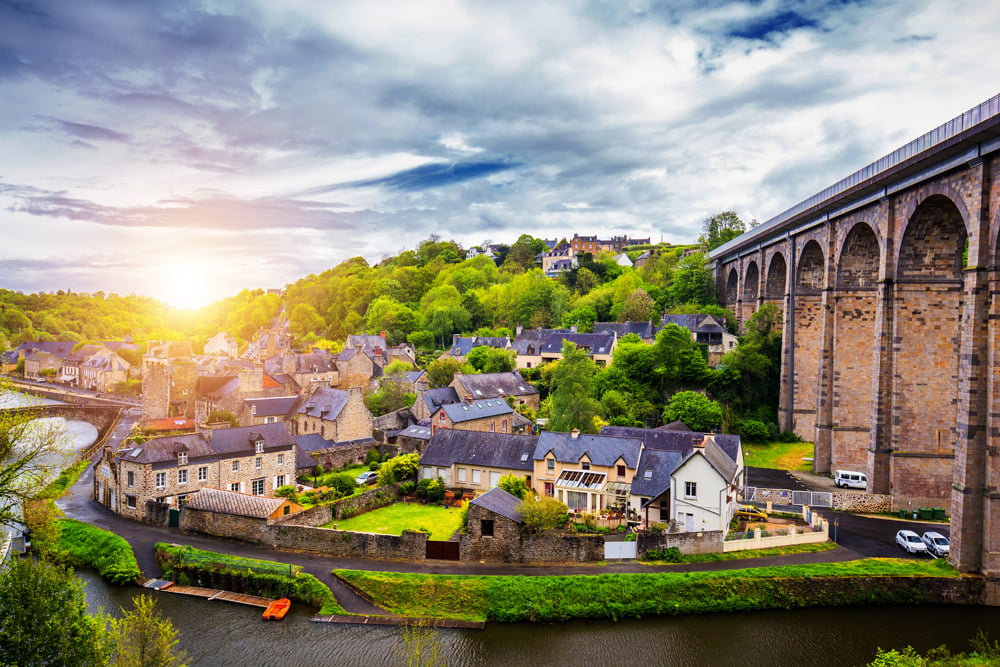
Explore the Attractions of Brittany on a Trip to France
Brittany is a totally different kind of region to experience on a trip to France. Located in the country’s north-west, it is unlike other regions of France and has been compared to Cornwall in the UK. That, however, only refers to the superficial look of the two, as the culture and attractions are very dissimilar.
What is Brittany known for? It has a 2800 kilometre/1740 mile long rugged coastline, many fine-sand beaches, thick lush forests, medieval towns, colourful festivals, and its own personal culture. The province has been responsible for inventing its own type of bagpipe called a cornemuse, its own Celtic music and dance, and its own type of crepes called galettes which are very tasty. It surprised me to find out that Brittany has 800 islands and islets and 2900 protected monuments. My first introduction to Brittany on a trip to France was memorable as I was struck down with acute appendicitis while on vacation there in my youth and had to spend time in a local hospital. However, this didn’t deter me from returning. Let’s look at some of the major attractions in Brittany.
St. Malo
St. Malo is my favourite place in Brittany for many reasons. Its principal outstanding feature is its city walls built mainly in the 18th century. Possibly the first thing to do on a France vacation is to climb the stairs and walk on the ramparts where you will have fantastic views over the old town as well as the sea and the coastline. Within the city are many delights. There is the Chateau de St. Malo, built in 1395 AD, now home to the History and Ethnography Museum, and the Jacques Cartier House. This is the former home of Jacques Cartier, the 16th-century explorer famous for discovering the passageway through the Gulf of St. Lawrence in North America. The house is maintained, as it was during his lifetime, with artefacts about his domestic life and his travels. There is the Fort National which has been an execution ground, a defence against enemies, and occupied by the Nazis during WWII where prisoners were held. There is the 12th-century St. Vincent Cathedral which contains the tomb of Jacques Cartier and also has some outstanding stained glass windows. There is Les Rochers Scupltes, which translates as “sculpted rocks” and are a series of around 300 carved unusual heads that face out to sea; one is of Jacques Cartier. Then there is the Demeure de Corsaire, which is an 18th-century house once belonging to a pirate. After these, you can easily spend much more time visiting the many other museums and landmarks, plus, if time allows, take advantage of the beach.

Dinard
Dinard is within eyesight of St. Malo as is located on the other side of a river estuary. The major attraction is Dinard’s many beaches, all sandy and pristine. It is a resort, first and foremost and has been called “the Cannes of the North.” Its beaches and mild climate have made it a popular vacation destination. It hosts an annual international film festival, and it is claimed that Alfred Hitchcock visited Dinard and based the house used in his movie Psycho on a villa overlooking one of the beaches here. T.E. Lawrence (Lawrence of Arabia) lived here as a child, and Picasso has painted here. Another attraction is Dinard’s well-known casino. It is also a good place for dining in one of the many fine restaurants. You might consider a visit to the Villa les Roches Brunes, a beautiful villa located on the edge of a cliff offering breathtaking views. It was built in the late 19th century and is open to the public.
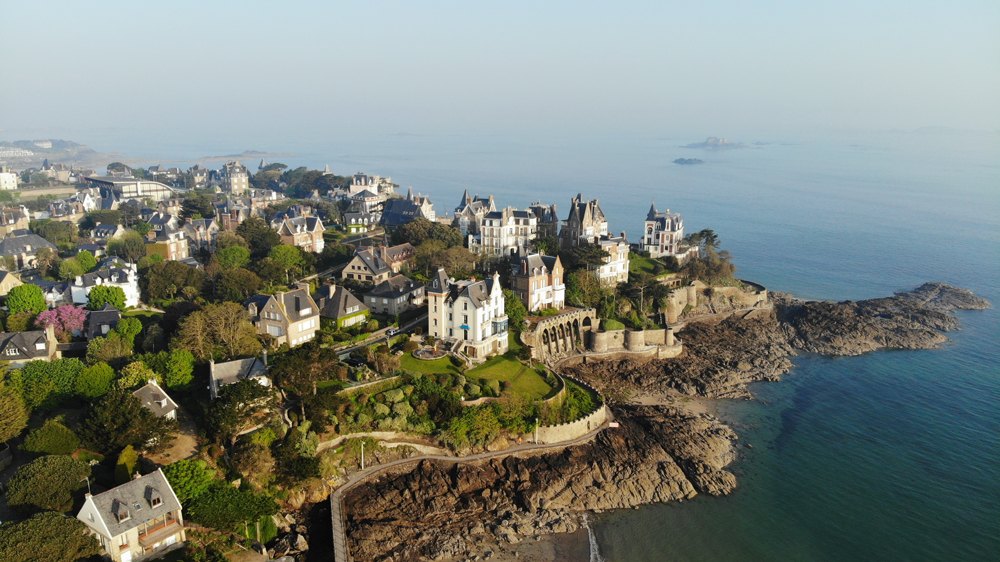
Dinan
Dinan is a medieval town situated on a hilltop and is one of the most attractive and best-preserved small towns in Brittany. It has a long history which is reflected in its 3 kilometres/1.8 miles long city walls (part of which can be walked on), its half-timbered houses, pretty port, and cobblestone streets. Dinan has many fine old buildings, some which date back as far as the 13th century. It is a great place to shop or simply visit art galleries and craft shops plus sample typical Breton specialities such as galettes – sweet and savoury – and locally produced potent apple cider. Dinan is home to artists, sculptors, engravers, bookbinders, glassblowers, and more. Major historical attractions include the Jacobins Theatre, dating from 1224 AD, the Gothic ornate St. Malo’s Church, the St. Saviour’s Basilica, the Duchess Anne’s Tower, and the Chateau de Dinan. A Dinan highlight on a trip to France is the Fete des Ramparts. The town is decorated and many locals dress up in medieval outfits for a two-day festival taking place on the third weekend of July every even-numbered year.

Quimper
Quimper is generally regarded as the cultural heart of Brittany. The town is known for its cathedral, atmospheric old quarter and museums but most of all for its annual festival celebrating Breton culture. The atmospheric old town contains many half-timbered houses dating back to the 14th century. The streets are named after old trades such as the Place au Beurre, where butter was sold and which is one of Quimper’s prettiest locations and a good place to stop for a crepe on your trip to France. Quimper’s cathedral, dating back to the 12th century, is very impressive and is said to be the best example of Gothic architecture in Brittany. Next door is the Bishop’s Palace which is now a museum featuring displays from archaeological excavations plus collections of costumes and furniture. Quimper holds 12 annual festivals, the best-known being the Cornwall Festival which attracts over 250,000 visitors every year and includes musicians, dancers, singers, and street artists with 200 shows and activities.
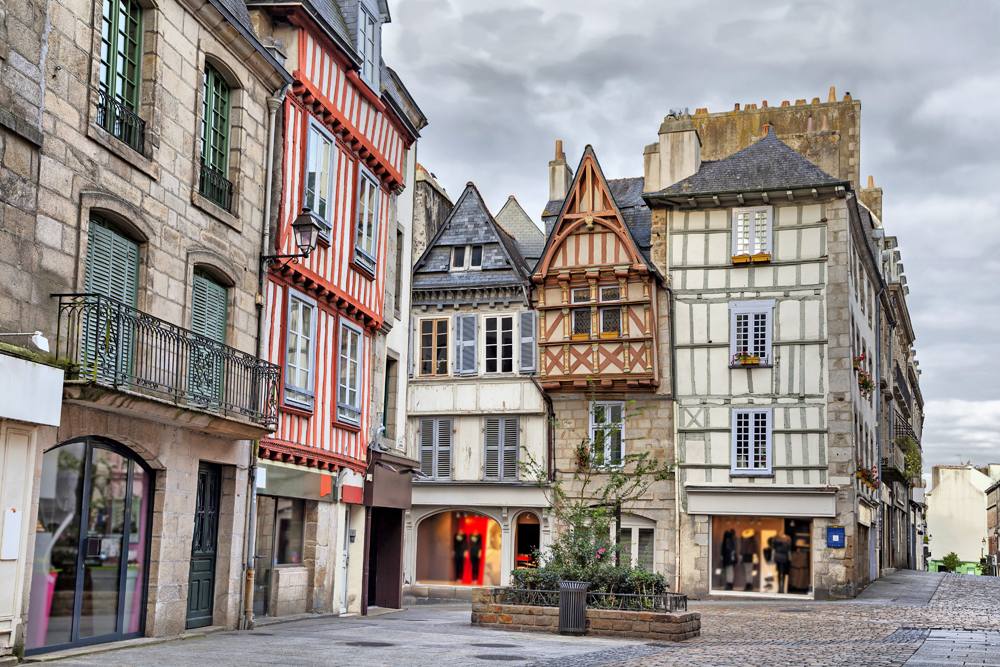
Roscoff
Built on a peninsula surrounded by the sea, Roscoff is an attractive, picturesque fishing village and small town with lots of character, including richly decorated houses that once belonged to ship owners, as well as a Gothic-styled church. It is also a seaside resort. The streets are lined with excellent restaurants that specialize in seafood and traditional Breton crepes, as well as art galleries and craft shops. An unusual venue is the Museum of the Onion Johnnies which tells the history of the well-known onion merchants who arrived from Britain on their bicycles selling onions door-to-door.

Vitre
Vitre is a suitable rival to Dinan when it comes to medieval architecture. This is reflected in its imposing 13th-century fortified castle which now houses a museum about the town ramparts, and old timber-framed houses. An old-world charm makes it a lovely place to wander around on your trip to France. The most atmospheric street in Vitre is Rue de la Baudriere, where half-timbered houses were built by merchants who made their money from the cloth trade. Vitre’s most famous resident was one Mme. de Sevigne, known for her letter writing. Her manor now houses a museum which displays objects from her life. The garden was designed by the man who created the gardens at Versailles.

Carnac
Carnac is known for its megalith mystery. Here there are rows and rows of locally hewn ancient standing stones, around 3000 of them, dating from 4000 BC! There are 2 converging rows stretching more than a kilometre/0.6 of a mile with the remains of a stone circle at either end. The largest stones are around 4 metres/13 feet high. It is not known exactly what the significance of them was, be it religious or cultural. To find out more, it is necessary to visit the local Museum of Prehistory or better still, the Maison des Megalithes where you can watch a film in English about the site. Another aspect of Carnac is its beach area where there are five sheltered beaches lined with attractive 19th-century villas and pine trees.
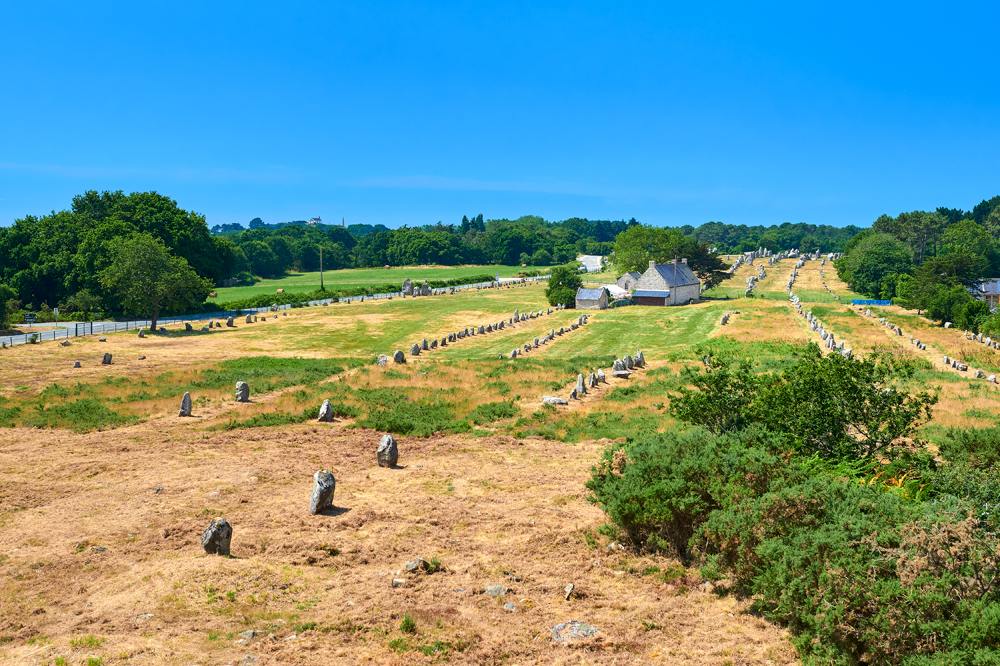
Concarneau
There is definitely something fishy about Concarneau – it is France’s third most important fishing port. However, that is not why you should spend time here on a trip to France. The main attraction is the medieval Ville Close, a walled town on a long island in the centre of the harbour. You can take a walk around the ramparts which offer exceptional views over the area. There are also some lovely sandy beaches and a lively maritime festival in August with traditional music and dance. The medieval district has a fishing museum, naturally. You can, if it appeals, take an organized trip on a sardine boat and try your hand at catching them. There are also several scenic walks along the coastal path where you will see splendid villas.
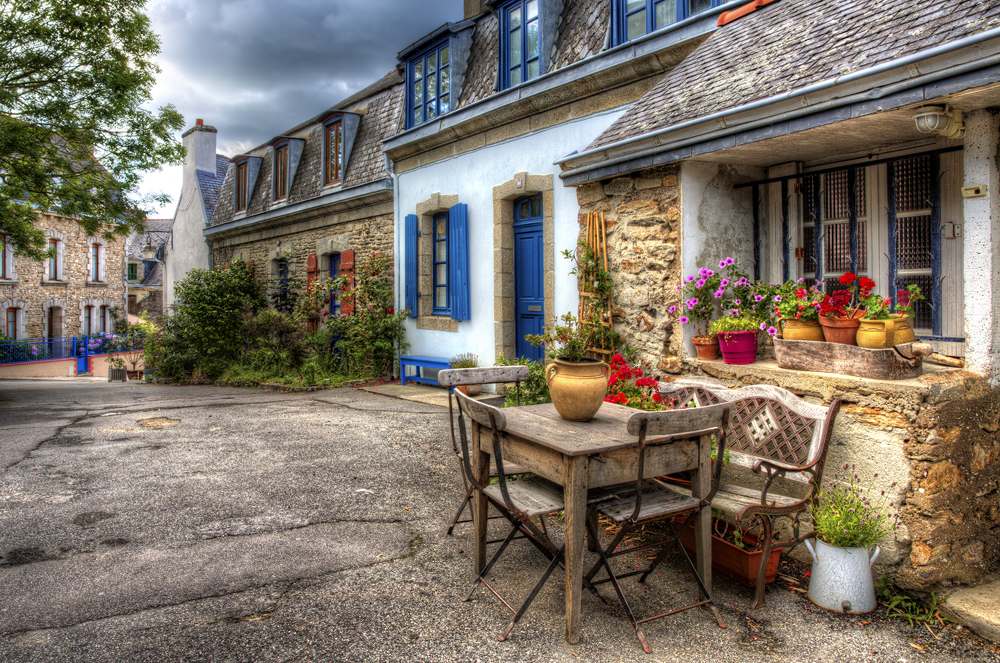
Belle Ile
Belle-Ile is an island situated off the Brittany coast and reached by ferry which leaves regularly from Quimper, 15 kilometres/9 miles away. The island measures 17 by 9 kilometres/11 by 6 miles. Why go there on a trip to France? It has the Cote Sauvage (Wild Coast) with steep cliffs, excellent beaches, and towns with lots of character. The Wild Coast provides great scenic walks and a lighthouse that can be visited for spectacular views of the island. The main town is Le Palais which has an 18th-century fort and now houses a luxury hotel and restaurant as well as a museum which explains the island’s history. Every street is full of pastry shops, boutiques, and cafes offering typical Breton fare. There is another fort on the northernmost tip of the island which was bought by the legendary actress, Sarah Bernhardt in 1894, as it was where she lived for a while. Today, it houses a permanent exhibition about her life. Every August, the island hosts a large highly thought-of opera festival which attracts some excellent performers.
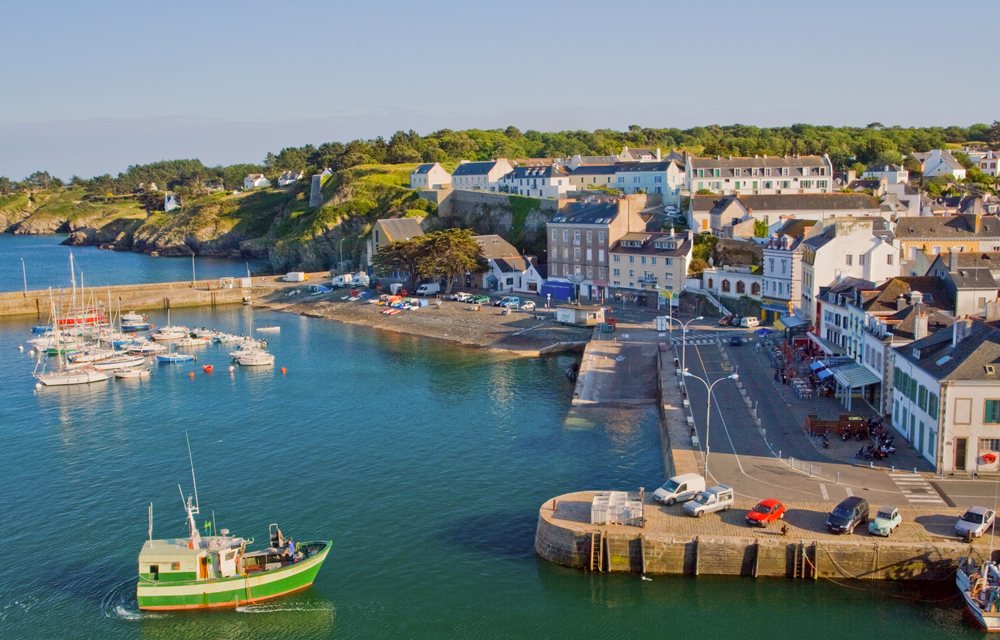
Get more travel inspiration by email.
Subscribe
0 Comments

Get the latest travel trends & hear about the best deals on vacations around the world.
If you’re a Globetrotter, these are the newsletters for you!



